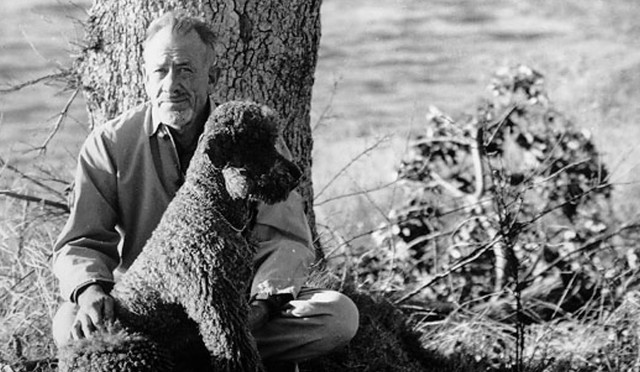
Associated Press
By Hillel Italie
Associated Press
NEW YORK — In July 1944, Orson Welles wrapped up one of his wartime radio broadcasts with a brief, emotional reading of one of the country’s favorite authors, John Steinbeck.
The piece was titled “With Your Wings,” an inspirational story about a black pilot that Steinbeck wrote for Welles’ program, and it seemed to disappear almost as soon as it was aired. There are no records of “With Your Wings” appearing in book or magazine form. Even some Steinbeck experts, including antiquarian James Dourgarian, know little about it.
“It doesn’t ring a bell at all,” said Dourgarian, who specializes in selling first editions of Steinbeck’s work. “And that’s saying something if I haven’t heard of it.”
But 70 years after its introduction in the midst of World War II, “With Your Wings” is getting a second release. Andrew F. Gulli, managing editor of the Birmingham, Michigan-based quarterly The Strand Magazine, came upon the transcript recently while looking through archives at the University of Texas at Austin. He features it in The Strand’s holiday issue, which comes out Friday.
Steinbeck, who died in 1968, wrote often about social injustice and on occasion featured black characters, notably Crooks in his classic novella “Of Mice and Men.”
“Steinbeck was an idealist. He saw America as this wonderful land with so much to offer, but on the flip side, he could see inequality. He could see greed and excess destroying the working classes,” Gulli wrote in a recent email.
“With Your Wings” at first reads like a standard narrative of a veteran’s return, a plot used by everyone from Homer to Ernest Hemingway. Second Lieutenant William Thatcher has completed his training and at a farewell ceremony receives silver wings, pinned to his chest. He climbs into his “clattering” Model-A Ford and sets out for an unidentified hometown. He appears to be greeted as a hero, or at least a celebrity, passing “crowded porches” and children “washed and dressed in their best and starchiest clothes, hairs bursting with ribbons.”
Thatcher’s sense of obligation is made more clear and powerful when Steinbeck reveals that he is black, at a time the military was segregated.
“He took off his cap with the gold eagle on it and held it in his hand. He saw his tall father lick his lips. And then his father said softly, ‘Son, every black man in the world is going to fly with your wings,’” Steinbeck writes.



